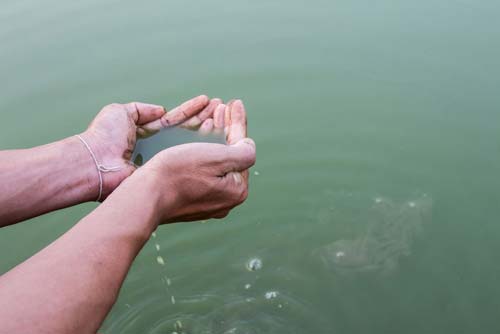“IT’S THE ONE TIME OF THE YEAR WHEN WE ALL ACT A LITTLE NICER, WE SMILE A LITTLE EASIER, WE CHEER A LITTLE MORE. FOR A COUPLE OF HOURS OUT OF THE WHOLE YEAR WE ARE THE PEOPLE THAT WE ALWAYS HOPED WE WOULD BE.”
-FRANK CROSS, SCROOGED
The holiday season is upon us – a time for spreading goodwill and reflection on how we could make the world a better place.
Being in the IoT services business we wanted to showcase some use cases beyond the flashy consumer uses and adoption hype of the billions of connected objects in the next few years, and turn our attention to use cases that are making the world a better place, spreading goodwill, and bringing some peace to man and species kind. Let’s take a look a few:
CONNECTED CAR SEATS

Don’t You Forget About Me (DYFAM) is a low-cost, open source device to prevent toddlers and babies from being inadvertently left unsupervised in a car for too long. The device is a project by Luca Toso and Arturo Caisso and can be attached to any car seat and senses the presence of a child along with proximity of its parents and the condition the car is in to ensure a child isn’t harmed by being in an overheating car.
MONITORING ELDERLY PEOPLE

AbiBird, an unobtrusive monitoring device that doesn’t require a wearable, currently in trial in Australia, is helping seniors age at home by tracking normal movements and activity levels. If there is a change in activity, be it excessive or no movement at all, loved ones will receive an alert.
PROTECTING ENDANGERED SPECIES

The Sigfox Foundation along with Lowveld Rhino Trust have begun tracking wild rhinoceroses in Southern Africa by implanting trackers into their horns, allowing the collection of the position of the rhino with minimum human interference. Their goal is to track all 29,000 rhinos left in the world to better understand them, and, as a result, better protect them.
THE IBERIAN LYNX, A PRESERVATION SUCCESS STORY

Efforts to repopulate the Iberian Lynx of Spain have been made possible with the help of IoT technology. La Olivilla, a Lynx breeding center in Southern Spain, introduces captive bred Lynx into the wild with IoT location tracking collars that provide scientists with valuable data about them and their habitats for future use in breeding and repopulation efforts.
DISASTER RELIEF

NOAA and NASA were fed data from IoT enabled sensors around the Houston area before Hurricane Harvey made landfall to predict where the storm would hit. This data gave first responders valuable insight as where to concentrate disaster recovery efforts. The data was applied to machine learning algorithms so that responders could set up staging areas, plan evacuation routes, identify optimum shelter locations, and predict flooding.
ADVOCATING FOR TENANTS’ RIGHTS

Heat Seek NYC is a response to the ongoing problem of landlord abuse, specifically in regards to providing tenants with adequate heat during the winter. Despite laws that set a legal limit for internal temperatures in housing units, many landlords fail to provide tenants with heat, causing the temperature in their units to fall below the legal limits. Heat Seek uses IoT sensors to track changes in temperature, identify when temperature falls below legal limits, and save this data to advocate for tenants’ rights.
CRIMINAL INVESTIGATION

An IoT enabled pacemaker aided law enforcement in convicting a man of setting his own house on fire. Upon being told by the suspected arsonist he had an ‘artificial heart,’ police investigators looked through his pacemaker data and were able to determine that with his heart condition, it would have been highly unlikely for him to have been able to collect and exit his home as quickly as he claimed.
SMARTER CITIZENS

Smart Citizen is a smart city participatory project that empowers citizens working and living in a city to be more cognizant of their environment by providing them with easy access to data generated by IoT enabled sensors, like air pollution, temperature, humidity, and noise level.
CLEAN WATER FOR ALL

Sarvajal develops and deploys “remotely monitored and controlled drinking water purification systems.” One such system is their Water ATM, a solar-powered, cloud connected water dispensing system that measures water quality and tracks the payment/transactions collected for its usage. This technology is placed in communities with poor water quality in order to ensure people in those areas have 24/7 access to a clean water, thus significantly lowering their risk of disease and dehydration.
ENSURING WORKERS’ SAFETY

Wearables are being used throughout various industrial sectors to monitor the safety of worker conditions. One such example is a device that monitors the fatigue level and “microsleeps” of workers whose jobs require alertness, such as truck drivers and heavy equipment operators. SmartCap monitors workers, sending fatigue warning alarms, which in turn can trigger safety interventions.
We love seeing these positive-impact projects across all industries, from healthcare to wildlife preservation, to the protection of basic human rights. These are just a few examples that remind us why we are in IoT. The goodwill power IoT has ends only at your imagination. As the industry evolves and trailblazers see connected sensors as solutions to humanitarian problems will we harness the power of the Internet of Good Things and make the world a better place.
What are some ways you’ve seen IoT used for good? Or how are you planning on using IoT for good? Comment or share with your answer, and let’s remind our industry why we do what we do!
